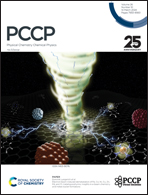Production and transport of plasma-generated hydrogen peroxide from gas to liquid
Abstract
In this work, the transport of hydroxyl radicals and hydrogen peroxide from a humid atmospheric pressure plasma jet into plasma-treated liquids is analysed. The concentration of H2O2 was measured by a spectrophotometric approach using the reagent ammonium metavanadate. OH was measured by the terephthalic acid dosimeter and the chemiluminescence of luminol. The plasma jet used is based on the design of the well-investigated COST reference jet and is extended by a capillary between the two electrodes. In addition to the experiments, the 0-dimensional plasma-chemical kinetics code GlobalKin was used to analyse the plasma chemistry in the gas phase in more detail. After 5 min plasma treatment, a maximum H2O2 concentration of 1 mM was found in the liquid, while the OH concentration was a factor 50 lower. The concentrations of both species in the liquid increased with plasma power, and the H2O2 concentration also increased with the humidity concentration of the feed gas, while the OH concentration first increased with humidity admixture and then decreased. The transport of both species could be controlled by the treatment distance, the gas flow rate and low frequency pulsing of the RF jet in such a way that the selectivity towards the long-lived species H2O2 was increased. Qualitative trends in the simulated number densities of gas phase H2O2 and OH at the location of the gas–liquid interface fit relatively well to the experimental measurements in the liquid.



 Please wait while we load your content...
Please wait while we load your content...